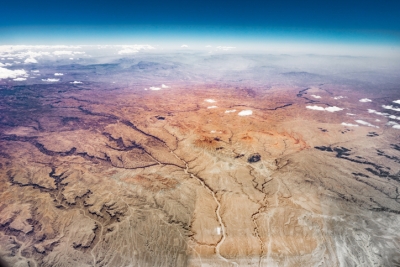
|
The structure of Earth can be divided into three parts: the crust, the mantle and the core. Made up from mainly oxygen and silicon, the crust is the outermost layer. It is the familiar landscape on which we live: rocks, soil and seabed. Beneath the crust is the mantle, a layer almost 3000 km deep. It is made of metal silicates, sulphides and oxides. This layer is so hot that the rock often flows like sticky road tar – only very, very slowly. Below the mantle is a core of metal, mostly iron, sulphur and nickel. The outer portion of the core is so very hot that the metal is always molten. The Earth’s magnetic field is created here. Earth’s inner core is even hotter – estimated to be around 6000 °C – but the metal is solid because pressure within the inner core is extreme, so the metal cannot melt. |
1: The Core
The composition of the Earth begins with the inner parts of the planet. The Earth’s core is the densest part of the planet. It is made up of iron and nickel, and the core is so hot that is heats the rest of the planet around it. The core has chosen how the planet will be heated, and the core of the planet determines the equilibrium of the planet itself.
2: The Magma
The magma underneath the Earth’s surface spins around the world as it keeps the crust warm. The warmth of the magma can be felt in certain parts of the world where the ground is very close to the magma. The magma can be found rising out of the surface of the Earth at volcanoes and underwater cracks in the crust. The magma is the lifeblood of the Earth even though it is quite a scary thing to encounter today.
3: The Crust
The crust of the Earth is the ground that everyone walks on today. The crust is much thinner than the other components of the Earth, but it manages to support all the life on the planet. The Earth’s surface is covered with the crust completely, but much of the Earth’s surface is covered in water. Citizens of the Earth may never explore the floor of the sea, but that area is still a part of the Earth’s crust.
4: Magnetism
The magnetism of the Earth that helps it stay attached to the sun in orbit comes directly from the core. The core’s construction keeps the magnetism of the Earth going in ways that scientists do not understand completely. The magnetism created by the core also helps the Earth create a gravitational field that keeps everyone on the planet.
Credit: AES
Picture credit: Google




